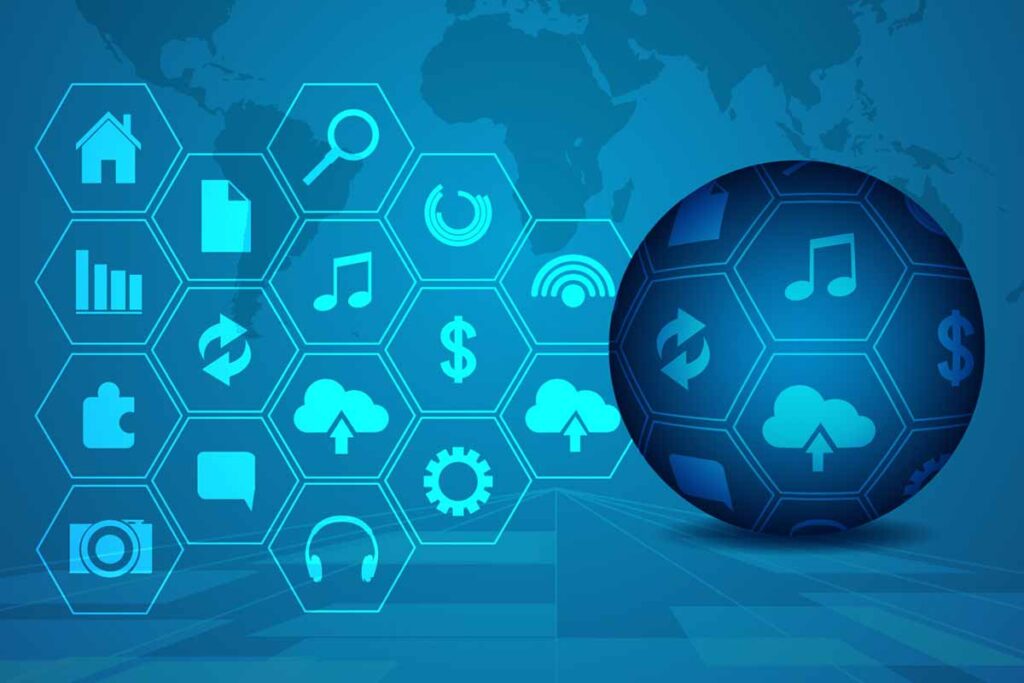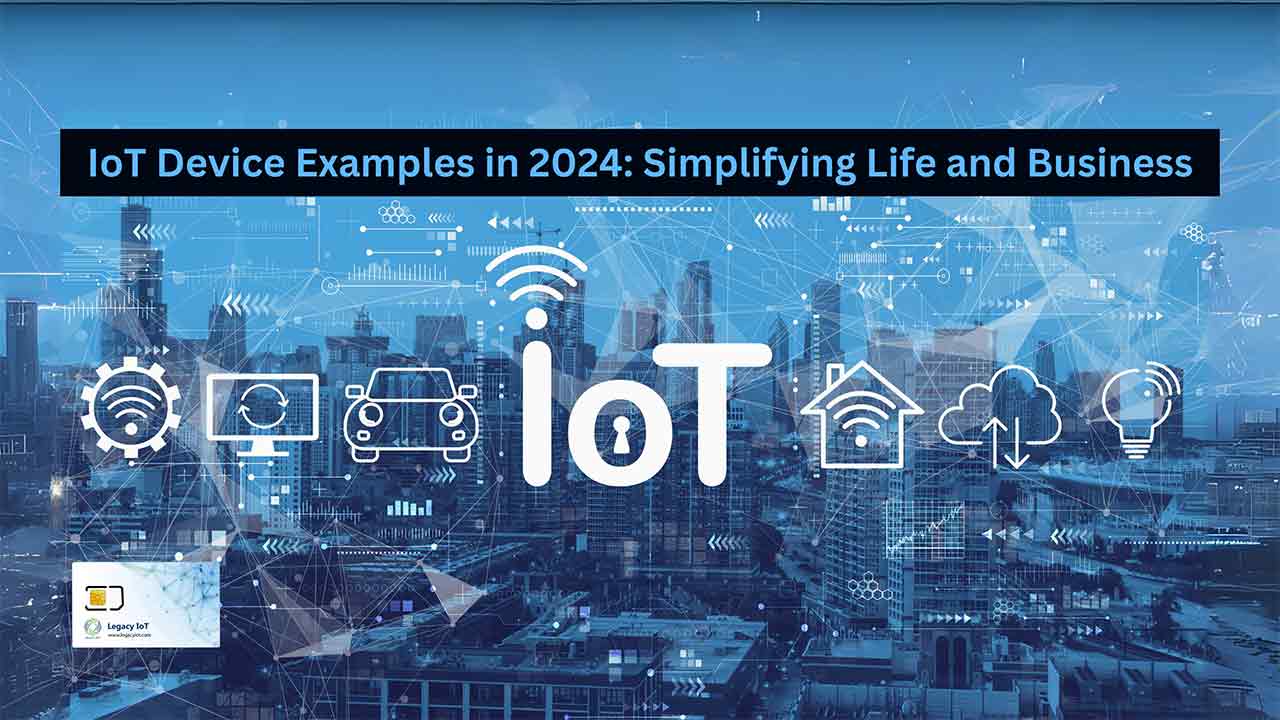The Internet of Things (IoT) is becoming more integrated into our lives every day. Whether it’s a smart thermostat, a fitness tracker, or an advanced security system, these devices help us manage daily tasks more efficiently. IoT connects these devices over the internet, enabling them to share data seamlessly, making our lives easier and more productive.

This blog will explore the latest IoT devices in 2025, highlighting how they enhance everyday life and business operations by streamlining processes and boosting efficiency.
IoT or Internet of Things Device with Examples
1. Sensors: Gathering Crucial Data
Sensors are foundational to the IoT ecosystem. These devices are used in both consumer and industrial environments, capturing critical data such as temperature, light, and motion. For instance, smart thermostats use sensors to adjust indoor temperatures automatically, while streetlights use optical sensors to turn on at dusk.
In industrial settings, sensors play a vital role in predictive maintenance, monitoring equipment conditions to prevent downtime. Sensors also drive automation in various sectors by collecting data that triggers other connected devices to perform tasks, reducing manual intervention.
2. Smart Home Devices: Enhancing Convenience
The concept of smart homes has exploded in recent years. IoT devices such as smart speakers, intelligent light bulbs, and connected smoke detectors have become household staples. These devices enable homeowners to control lighting, security, and entertainment systems via their smartphones or voice commands.
Want to Know more about IoT Smart Home?
Innovative appliances, like smart refrigerators and thermostats, use IoT to gather environmental data and optimize their operations, saving energy and enhancing user comfort. As smart home adoption grows, these devices offer increased convenience and energy savings.
3. Wearable Technology: Staying Connected on the Go
Wearable IoT devices are everywhere—from fitness trackers and smartwatches to earbuds. These devices not only monitor health and fitness but also keep users connected. Smart glasses and virtual reality (VR) headsets are gaining traction, providing immersive experiences and real-time data access.
Wearable Internet of Things devices like heart rate monitors and sleep trackers offer insights into health, encouraging users to adopt healthier lifestyles. As IoT wearables evolve, their potential to enhance public health and well-being will continue to grow.
4. Medical IoT Devices: Revolutionizing Healthcare
IoT has transformed healthcare by introducing devices that allow for remote monitoring and improved diagnostics. Medical IoT devices like heart monitors, glucose sensors, and smart inhalers provide doctors with real-time data, enhancing patient care.
Patients can now receive remote medical attention without visiting healthcare facilities, making healthcare more accessible and efficient. These devices enable better disease management and improve the overall patient experience, particularly in chronic disease management.
Want to Know more about IoT in Healthcare?
5. Industrial IoT: Boosting Efficiency in Logistics and Manufacturing
Industries heavily rely on IoT devices for automation and optimization. Logistics companies use IoT sensors to track shipments, monitor temperature conditions, and manage inventory through the IoT management platform. This ensures smooth operations and reduces delays in the supply chain.
In manufacturing, IoT devices enable predictive maintenance, quality control, and remote production monitoring. By collecting data from machines and equipment, IoT reduces human error and boosts overall efficiency in industrial environments.
6. Point of Sale (PoS) Terminals
IoT devices have also improved how retailers manage transactions. Smart PoS terminals enable businesses to accept various payment methods, provide real-time sales tracking, and offer detailed insights into consumer behavior. IoT-powered PoS systems enhance the shopping experience, making it more secure and efficient.
How IoT Devices Connect and Function
IoT devices communicate through various network protocols, such as Wi-Fi, Bluetooth, and cellular networks. The type of connection depends on the device’s energy consumption, data transmission requirements, and distance from other connected devices.
For instance, home devices like smart thermostats connect to Wi-Fi, while fitness wearables often use Bluetooth for lower power consumption. Industrial devices may rely on cellular networks to transmit data over long distances through IoT Portal.
Conclusion
IoT devices are revolutionizing both personal and business environments. Whether you’re automating your home, monitoring your health, or optimizing your business operations, Legacy IoT devices in 2025 offer endless possibilities for convenience, efficiency, and data-driven decision-making. As these devices continue to evolve, their impact on everyday life and industry will only grow.





